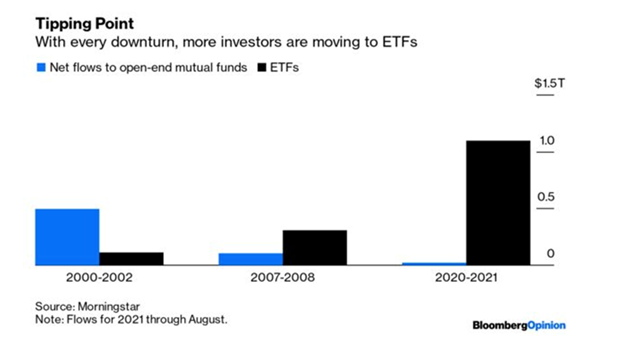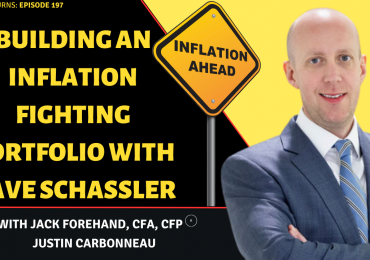ETFs have won the battle with mutual funds, contends an opinion piece from Nir Kaissar in Bloomberg. Though ETFs have been around for 3 decades, it’s only since 2007 that the industry began to give them much attention.
Mutual funds generated tens of billions of dollars a year in fees reliably, and survived the dot-com crash in 2000. But 7 years later, actively managed mutual funds took a beating during the financial crisis. Investors started looking around for other options and ETFs, with their array of low-cost index funds that tracked broad markets, delivered investors what they wanted. Since 2007, investors have given $4 trillion to ETFs, and there are now more than 2500 of them.
ETFs are different in two ways that give them an advantage, the article contends. The first is cost: U.S.-based ETFs have a median expense ratio of 0.5% a year, as opposed to mutual funds’ 0.93% across all share classes. That difference can add up to tens of thousands of dollars over a lifetime of investing. Second, ETFs are more tax efficient since they trade like stocks and don’t stick shareholders with a tax bill if the holdings have appreciated when money is withdrawn.
With the Covid-19 sell-off last year accelerating flows into ETFs, some mutual fund companies are starting to launch their own ETFs or convert existing mutual funds into ETFs to meet growing demand. Mutual funds will still be around for a while—there’s more than $17 trillion currently in actively managed funds—but the future belongs to ETFs.










